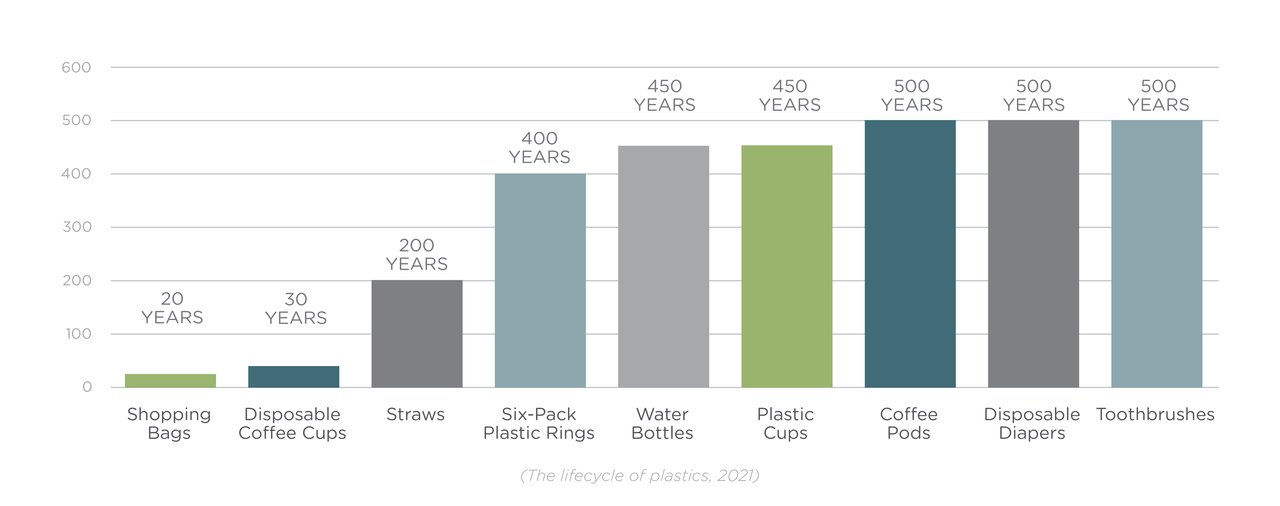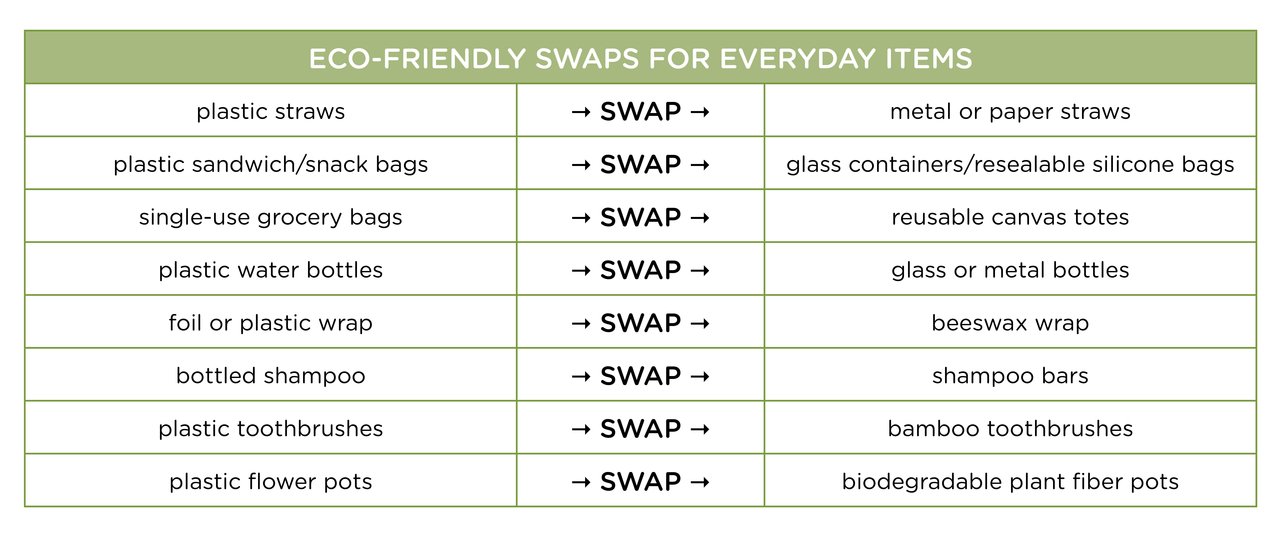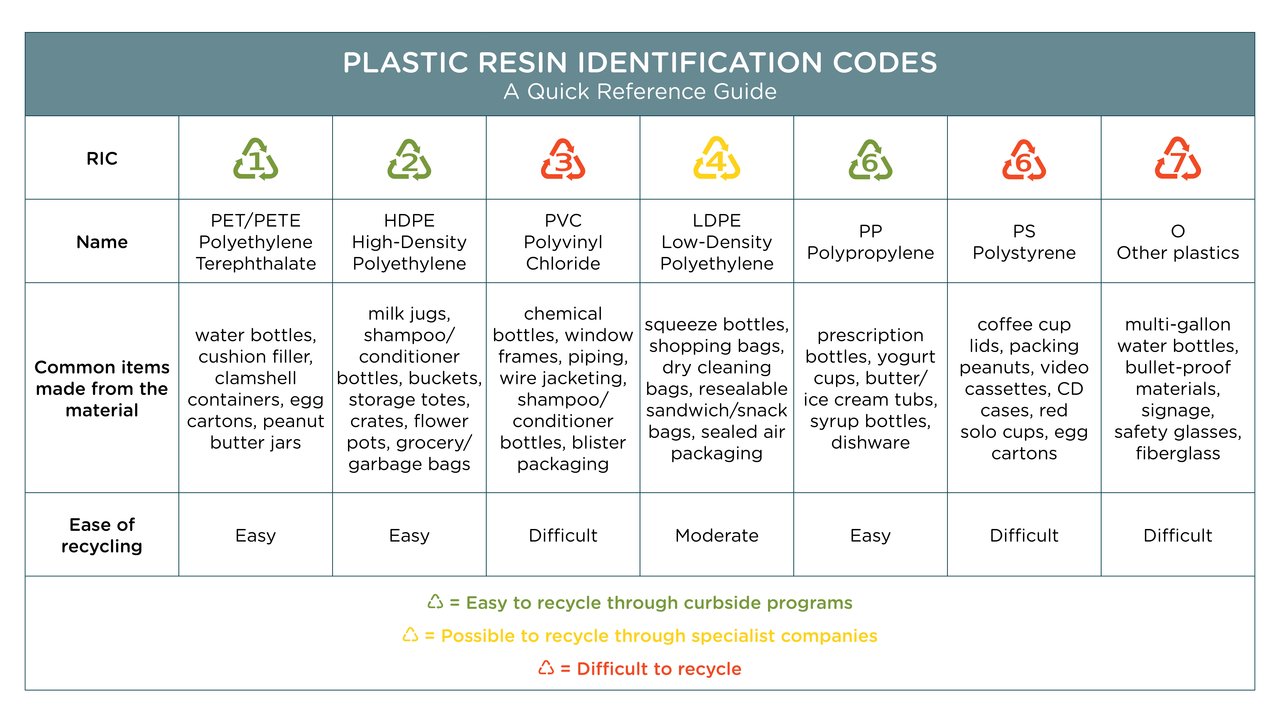FREE delivery in the contiguous US!
Ocean Plastics: Facts, Stats & How You Can Help
Plastic has made our lives easier in many ways. It’s durable, lightweight, and has a variety of uses, from storage containers to outdoor furniture. The problem with plastic is that it's often discarded improperly. And sadly, much of that plastic ends up in our oceans.
So what can we do to protect our oceans? We can start by arming ourselves with knowledge, then use what we’ve learned to create lasting solutions that keep our oceans and waterways clean, healthy, and safe.
Keep reading to learn more about ocean plastic pollution and what you can do to help our planet.
What's on This Page
5 Ocean Plastic Facts
1. Globally, we’ve only recycled 9% of plastic.
Of the 8.3 billion metric tons of plastic produced over the decades, we've only managed to recycle 9% of it worldwide (OECD, 2022).
2. By 2040, the amount of plastic pollution is expected to triple.
Approximately eight million metric tons of plastic are dumped into the oceans annually (Jambeck et al., 2015). If we don’t take action now, we're looking at nearly 24 million metric tons of litter by 2040 (UNEP, 2021).
3. The ocean absorbs over 30% of global carbon emissions.
Between 1994 and 2007, the world's oceans kept 34 billion metric tons of CO2 emissions out of the atmosphere. Since then, the absorption rate has increased as atmospheric carbon levels rise, but one day our oceans may be unable to keep up and marine life will be at risk due to excess CO2 (Gruber et al., 2019).
4. Humans are eating microplastics.
Recent research estimates that we unintentionally consume 0.1–5 grams of microplastic (plastic that's broken down into microscopic bits) every week (Senathirajah et al., 2021).
5. There are over 700 oceanic dead zones worldwide.
Sewage outfalls and agricultural runoff are the primary contributors to dead zones—oxygen-depleted areas in the oceans that can’t support marine life. There are over 700 dead zones globally—a steep increase from the 1930s when fewer than five had been identified (Malone & Newton, 2020).
How Plastic Gets into the Ocean
Littering:
Improper waste disposal, illegal dumping, and carelessness contribute to the increase in plastic pollution. People discard their waste on the ground or right in the water, assuming that a little bit won't hurt anything. Unfortunately, that assumption has led to the problems we face today.
The wind:
You may recycle like a champ, but wind gusts could tip your bin over or whisk a few pieces away while being transported to your local recycling facility. Many plastics are lightweight and flexible and can easily be blown into rivers or storm drains that flow out to sea.
Industrial leakage:
Improper disposal of plastic doesn't just happen on an individual level: Companies with lax collection and disposal practices for construction materials, synthetic textiles, plastic pellets, and other waste are largely responsible for plastic entering the environment.
Down the drain:
Congress passed the Microbead-Free Waters Act of 2015, which banned the use of microbeads in rinse-off health and cosmetic products, but it didn't address other types of microplastics. This means plastic may lurk in your personal care routine and get washed down the drain. Next time you stock up on sundries, check the packaging labels and try to avoid these ingredients:
· Polyethylene
· Polypropylene
· Polyethylene terephthalate
· Polymethyl
Microfibers are another risk for plastic entering the ocean. These plastic fibers shed off synthetic clothing in the washing machine. Like microplastics, microfibers are so tiny that wastewater plants have difficulty filtering them out, offering a direct pathway to the ocean.
How Long Does It Take for Plastic to Degrade?
Exact time varies on landfill conditions.

Click to enlarge +
Genuine POLYWOOD Lumber
4 Ways You Can Limit Plastic Pollution
We can turn the tide on plastic pollution if we make lasting lifestyle changes. There are many ways to make a positive impact—and they're all easy.
1. Choose Eco-Friendly Products
Reduce waste by seeking environmentally friendly alternatives for everyday items.

Click to enlarge +
2. Volunteer
Do some research to see if there are any cleanup opportunities in your community.
3. Contact Your Local Government
Write an email or letter to your representatives about passing policies to improve waste management infrastructure.
4. Recycle
Always ensure your plastic gets thrown away in the recycling bin, even if it's an inconvenience.
How to Recycle Plastic
Here's an easy guide that will help you learn which plastics can be recycled—and which ones cannot—and how to do it correctly.
Resin Identification Codes, Explained
The chasing arrows symbol is recognized all over the world. But you may have noticed that there are sometimes numbers inside the symbols, which is called the resin identification code (RIC). RICs #1 through #7 refer to plastics, but the recycling numbers go higher as you get into metal, glass, paper, and other materials.

Click to enlarge +
NOTE: Recycling laws and regulations vary by state, county, and city. Check your local town or government's website to learn more about recycling in your area.
Recycling FAQs
One piece of dirty plastic can contaminate the rest of the items in your curbside bin. So take a few extra minutes to clean your recyclables—and be a good neighbor to the hard workers at your local recycling center or waste management plant.
References
1. Gruber, N., Clement, D., Carter, B. R., Feely, R. A., van Heuven, S., Hoppema, M., Ishii, M., Key, R. M., Kozyr, A., Lauvset, S. K., Lo Monaco, C., Mathis, J. T., Murata, A., Olsen, A., Perez, F. F., Sabine, C. L., Tanhua, T., & Wanninkhof, R. (2019). The oceanic sink for anthropogenic CO2 from 1994 to 2007. Science, 363(6432), 1193–1199. https://doi.org/10.1126/science.aau5153
2. Jambeck, J. R., Law, K. L., Narayan, R., Andrady, A., Perryman, M., Siegler, T. R., Wilcox, C., & Geyer, R. (2015). Plastic waste inputs from land into the ocean. American Association for the Advancement of Science. Retrieved from http://jambeck.engr.uga.edu/wp-content/uploads/2022/02/science.1260352-Jambeck-et-al-2015.pdf.
3. Malone, T. C., & Newton, A. (2020). The globalization of cultural eutrophication in the coastal ocean: causes and consequences. Frontiers in Marine Science, 7. https://doi.org/10.3389/fmars.2020.00670
4. OECD. (2022). Global plastics outlook: economic drivers, environmental impacts and policy options. OECD iLibrary. https://doi.org/10.1787/de747aef-en
5. Senathirajah, K., Attwood, S., Bhagwat, G., Carbery, M., Wilson, S., & Palanisami, T. (2021). Estimation of the mass of microplastics ingested – a pivotal first step towards human health risk assessment. Journal of Hazardous Materials, 404, 124004. https://doi.org/10.1016/j.jhazmat.2020.124004
6. The lifecycle of plastics. WWF-Australia. (2021, July 1). Retrieved March 8, 2023, from https://www.wwf.org.au/news/blogs/the-lifecycle-of-plastics#gs.h8cpu
7. UNEP. (2021). From pollution to solution: A global assessment of marine litter and plastic pollution. United Nations Environment Programme. Retrieved from https://wedocs.unep.org/bitstream/handle
